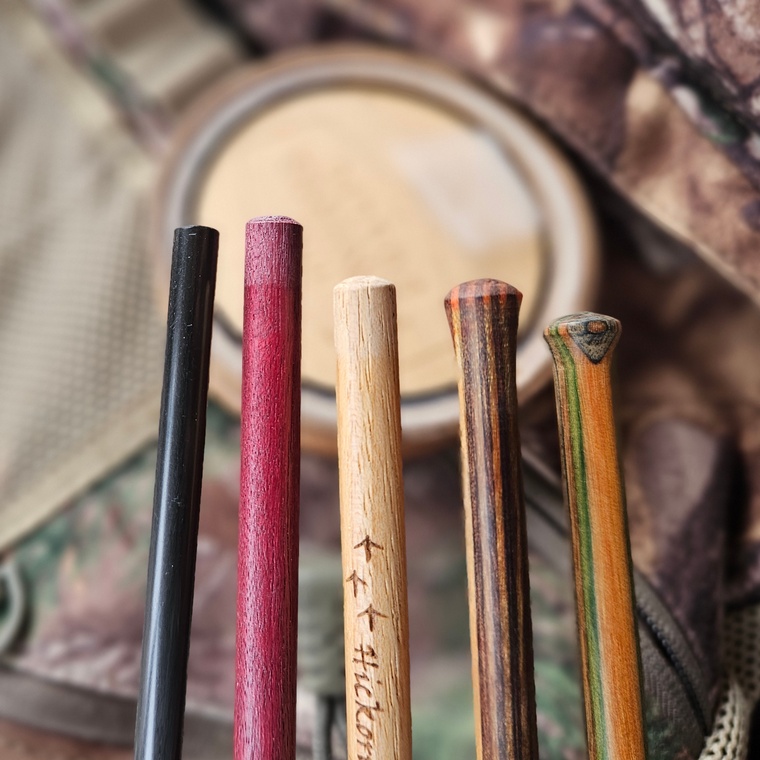Turkeys can be finicky, temperamental, cautious, unpredictable, volatile, maddening, yet adrenaline-inducing, and hopelessly addictive to hunt. They don’t often follow the script we lay out in our heads. A mature tom is unpredictable, to say the least, and you may get ten different reactions to the same scenario, on ten different hunts.
One way to expand your calling repertoire is by using different pot call strikers. Multiple strikers on the same pot call can create distinct sounds, and you never know which tone will flip that bird’s attitude.
The options are vast. Two-piece or custom- turned, flat end vs. flared end, acrylic, carbon, or wood. Then there are the woods — cherry, walnut, oak, zebrawood, rosewood, and more. Each affects the tone, pitch, and range of the call. The variety is overwhelming. Some woods I wouldn’t have even known existed if not for turkey strikers — snakewood, Osage orange, black locust, or purpleheart. More common woods include hickory, birch, maple, oak, cherry, pecan, and ash. Then there’s dymondwood, a laminated wood/plastic composite that is dense, visually appealing, and produces excellent sound. You can really go down a rabbit hole with all the choices (and I have) but that’s part of the fun of turkey hunting.

The striker’s tip also affects the sound. Flat ends tend to produce crisper, sharper sounds that carry farther. Flared or rounded ends create softer, subtler tones.
Some strikers work better in damp conditions, and turkey hunters certainly know the struggle of trying to sweet-talk a gobbler with a wet pot call. Some wood strikers are coated for use on wet calls, while acrylic and carbon strikers often work better when damp.
Once you dive into the world of turkey call strikers and start experimenting, you may never stop. It’s a great way to fill the off-season and test new gear. Having a variety on hand in spring could make all the difference for that finicky tom.
Originally published in the Spring 2025 issue of Ontario OUT of DOORS




Contact Information
PO Box 2800 / 4601 Guthrie Dr.
Peterborough, Ontario Canada K9J 8L5
Phone: 705-748-OFAH (6324)
Fax: 705-748-9577
Join Our Newsletter
Watch
Shop
Follow